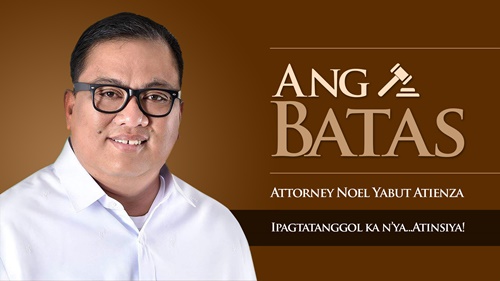The crime of grave coercion is committed by any person who, without authority of law, shall, by means of violence, prevent another from doing something not prohibited by law, or compel him to do something against his will whether it be right or wrong.
For grave coercion to lie, the following elements must be present: “1. that a person is prevented by another from doing something not prohibited by law, or compelled to do something against his will, be it right or wrong; “2. that the prevention or compulsion is affected by violence, threats or intimidation; and “3. that the person who restrains the will and liberty of another has no right to do so, or in other words, that the restraint is not made under authority of law or in the exercise of any lawful right.
Section 1 of Republic Act 7890 (“An Act Amending Article 286, Section Three, Chapter Two, Title Nine of Act No. 3815, As Amended, Otherwise Known As The Revised Penal Code as Amended”).
The said provision states that: “Section 1. Article 286, Sec. Three, Chapter Two, Title Nine of Act No. 3815, as amended, is hereby further amended to read as follows: “Art. 286. Grave Coercion. — The penalty of prision correccional and a fine not exceeding Six thousand pesos shall be imposed upon any person who, without any authority of law, shall, by means of violence, threats or intimidation, prevent another from doing something not prohibited by law, or compel him to do something against his will, whether it be right or wrong.
“If the coercion be committed in violation of the exercise of the right of suffrage, or for the purpose of compelling another to perform any religious act, to prevent him from exercising such right or from so doing such act, the penalty next higher in degree shall be imposed.”
The violence must be actual and immediate else if the violence is a future harm, it is threat
B. The purpose of the accused need not be attained
C. Examples: Applying force, violence, or intimidation in order to: 1. Compel a suspect to make a confession 2. Compel the driver to change course 3. Stop a person from making a construction 4. Prohibit a student from leaving the classroom 5. Force a tenant into leaving the leased premises coupled with padlocking the door 6. Compel a person to board a vehicle even if after some distance she was able to break free and ran away 7. Break a girl’s spirit so that she will agree to marry the accused even if she was taken from her house and brought elsewhere. 8. Take back or recover one’s own property from another even if said property has been previously taken away.
D. The penalty is higher if the coercion relates to: 1. The exercise of suffrage as preventing a voter from voting: 2. Exercise of religion, such as pointing a gun at another to prevent him from making the sign of the cross
Light Coercion is committed by any person who seizes anything belonging to his debtor by means of violence for the purpose of applying the same to the payment of the debt. Elements of light coercion: …
The purpose of the offender is to apply the same to the payment of the debt. Art. 287. Light coercions. — Any person who, by means of violence, shall seize anything belonging to his debtor for the purpose of applying the same to the payment of the debt, shall suffer the penalty of arresto mayor in its minimum period and a fine equivalent to the value of the thing, but in no case less than 75 pesos. xxx” Elements of light coercion: 1. The offender must be a creditor; 2. He seizes anything belonging to his debtor; 3. The seizure of the thing be accomplished by means of violence or a display of material force producing intimidation; 4. The purpose of the offender is to apply the same to the payment of the debt.
Illustration: A demanded payment from B of the latter' s debt. Since B had no money with which to pay the debt, A took from the store of Ball the goods which the latter had. A ignored the opposition of B who could not do anything because A had a revolver. (U.S. vs. Tupular, 7 Phil 8)
The main purpose of the law penalizing coercion and unjust vexation is precisely to enforce the principle that no person may take the law into his hands and that our government is one of law, not of men. It is unlawful for any person to take into his own hands the administration of justice. (Maderazo vs. People, G.R. No. 165065, September 26, 2006).

